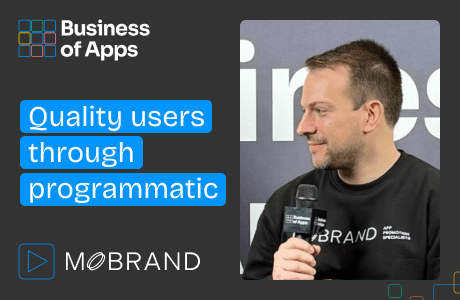
We live in a contradictory age, in which our methods for marketing and communication are more advanced and widespread than ever, and yet the consumer base we’re trying to reach has less and less attention to spare.
With the supersaturation of free apps and more content than a person could stream, watch, listen to, or play in a lifetime, getting your message to stand out enough to make an impact can make or break a brand. Business have adapted their financial models to take advantage of the so-called “Attention Economy,” which Sizmek defines as:
“An environment where consumer attention is the resource. This resource is increasingly scarce because of media overload, the amount of places we can receive messages and the flood of content we receive every day.”

Engage, Don’t Alienate
In light of this information overload and attention scarcity, brands need to vie even more competitively for consumers to notice. This, in turn, pushes attention spans even lower and drives consumers to adapt defence mechanisms to filter out the white noise of annoying and irrelevant ads. This then pushes marketers to push out even more content, in a vicious cycle of communications that miss their mark and get lost in the crush.
And this is all without bringing tools consumers may use, like spam filters and ad blockers, into the mix.
In the interest of achieving a genuine connection with savvy consumers, marketing campaigns need to get smart as well. First and foremost, it’s no longer enough to send out marketing blasts and hope some of it sticks; marketing needs to be highly personalized and targeted where it’s most likely to take effect.
But none of this is worth anything if you can’t even break through your consumer’s attention firewall.
Push Notifications: Flash Communications for Low Attention Spans
It’s been the subject of criticism, jokes, and finally resignation: we are addicted to our phones. With the average mobile phone owner spending a shocking 4 hours per day on their device, this is clearly your best medium for getting noticed.
That’s where push notifications come in.
Push notifications are automatic messages sent from mobile apps to users who have downloaded that app onto their phones. They are fast, to-the-point, and versatile. Push notifications can be used for any communication ranging from an inclement weather warning to a reminder that a customer has items in their shopping cart ready to go to checkout to a suggestion of a new Netflix series they might be interested in streaming.
Fire Up Your Growth!
Moburst propelled leading brands like Google, Reddit, and Uber to the next level. Let’s ignite your Success journey today!
Claim Your FREE Growth Fuel!Unfortunately, as with traditional marketing methods, too many poorly targeted and badly timed push notifications have driven mobile phone users to the limits of their patience for unsolicited marketing from apps. According to Business Insider, on average only 45% of mobile phone users enable push notifications, and of that percentage only a further 9% of notifications achieve click-through.
This leads to the question: how can you ensure that your notification is one of the 4% that sparks engagement?
Take a 3-Pronged Approach
Studies have shown that push notifications, when done right, result in increased customer loyalty and retention. Luckily, SDKs such as OpenBack’s hybrid solution provide the tools for you to design a bespoke and effective push notification campaign to optimize your impact.
Just keep in mind these three pillars when it comes to structuring your campaign: What, When, and How Much.
Timing is Key
First of all, timing can make or break the fate of a push notification. Whether it leads to click-through and genuine engagement or whether it’s left to languish unread in a notification center can depend on the time it’s seen by the user.
For example, one might assume that 5 pm, the time most people get off work, would be the optimal time to send a push notification. However, that isn’t taking into account the fact that people might have an hour of commuting afterwards, or a workout routine, or dinner to prepare, etc. A push notification sent when someone is busy with one of these other tasks might be met with frustration. Don’t take that risk.
A good push notification platform can help you plan out your campaign on a user-to-user basis, using machine learning to gauge when your user might be relaxed at home, scrolling on their phone, or asleep based on usage. More advanced metrics can even tell you when a user has their headphones in, or when their screen is unlocked, to facilitate viewing rich content or watching videos, etc.
And remember: the best or most convenient moment for the marketer is not always the best moment for the user.
Every User is Unique – Their Push Notifications Should Be Too
Nobody wants to be treated like they’re just another face in a crowd. Mobile users want to feel like they’re seen, understood, and appreciated by brands, and there’s a very narrow window where you can deliver content that’s personalized but not invasive.
Again, device-side triggers combined with common sense can help you to customize your push notifications so that they’ll be beneficial to the individual you’re targeting and drive engagement. For example, say a mobile user has booked flights to Paris using your travel app. It’s unlikely that they’ll be going on another big trip in the following months, so offering them a deal on another flight to Paris will likely not impress them.
However, if you send communications with related information and use cases for your app – hotels with vacancies for the days they’ll be in Paris, car hires, top 10 local restaurants, tips on cultural activities in the area – they will appreciate your doing their due diligence for them. As an added bonus, it will serve as a demonstration of the different capabilities of your app.
A Little Bit Goes a Long Way
Finally, for heaven’s sake, don’t overdo it! If your users start to see your communications as just another voice screaming into the void, they will ignore you at best. In the worst-case scenario, if they begin to view your app as spamming them with pointless messages, they will delete it.
Instead, work on cultivating a good rapport with your users. One well-placed push notification is better than 10 randomly blasted messages, and a few notifications sprinkled throughout the day can let users know you’re eager to communicate and engage, but you’re not going to overstep your bounds.
And once you’ve hit that one-month retention point where your app is still being used regularly, you can bask in the knowledge that – barring something unexpected happening – you have brought one more loyal customer around. After all, in the Attention Economy, time truly is money.










